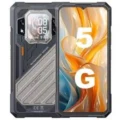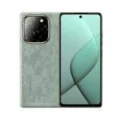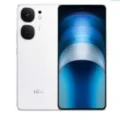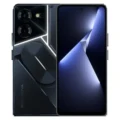Nokia 1.4




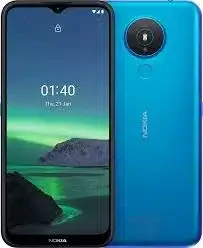

- : 1-3GB RAM Snapdragon 215
- : 6.52" 720x1600 pixels
- : 4000mAh
- : 8MP 720p
Introducing the Nokia 1.4 – Unleashing Affordable Excellence
Discover the perfect blend of affordability and performance with the Nokia 1.4, a budget-friendly smartphone that doesn’t compromise on quality. Engineered to meet the diverse needs of users, this device combines sleek design, reliable functionality, and an accessible price point.
Powered by a robust Qualcomm® Snapdragon™ processor, the Nokia 1.4 ensures seamless multitasking and swift app launches, offering a responsive user experience. Its expansive 6.51-inch HD+ display provides vibrant visuals, making streaming, gaming, and browsing a delight.
Capture every moment with confidence using the Nokia 1.4’s dual rear camera setup, featuring a 8 MP main lens and a 2 MP depth sensor. Whether it’s stunning landscapes or group photos, this smartphone empowers users to unleash their creativity. The 5 MP front-facing camera is perfect for clear video calls and selfies.
Running on the Android™ 10 (Go edition) operating system, the Nokia 1.4 guarantees access to a wide array of apps on the Google Play Store, optimized for a smoother performance on a budget-friendly device. With Android Go’s efficient use of resources, you can enjoy a nimble and responsive user interface without compromising on essential features.
Designed with durability in mind, the Nokia 1.4 boasts a sturdy construction, ensuring longevity and resilience in everyday use. The impressive 4,000mAh battery provides all-day power, reducing the need for frequent recharging.
Stay connected with 4G LTE support, enabling faster data speeds and reliable connectivity. The Nokia 1.4 also features a convenient fingerprint sensor, offering secure and quick access to your device.
Embrace affordability without sacrificing quality – it is the epitome of accessible excellence. Elevate your smartphone experience with this reliable, feature-packed device that exceeds expectations without breaking the bank. Explore the world of possibilities with it – your gateway to affordable innovation.
Specs
Network
| 2G Network GSM 850 / 900 / 1800 / 1900 - SIM 1 & SIM 2 (dual-SIM) CDMA 800 / 1900 |
GSM 850 / 900 / 1800 / 1900 - SIM 1 & SIM 2 (dual-SIM model only) |
| 3G Network |
HSDPA 850 / 900 / 2100 - International HSDPA 850 / 900 / 1700(AWS) / 1900 / 2100 - LATAM, USA |
| 4G Network |
1, 3, 5, 7, 8, 20, 28, 38, 40, 41 - International 1, 2, 3, 4, 5, 7, 12, 17, 28, 66 - LATAM, USA |
| Speed |
HSPA 42.2/5.76 Mbps, LTE Cat4 150/50 Mbps |
LAUNCH
| Announced | February, 2025 |
| Status |
Available. Released 2021, February 03 |
BODY
| Dimensions | 166.4 x 76.7 x 8.7 mm (6.55 x 3.02 x 0.34 in) |
| Weight | 178 g (6.28 oz) |
| Build | Glass front, plastic back, plastic frame |
| SIMs SIM (Subscriber Identity Module) is a small card that contains mobile network subscriber's account information. This allows the phone using the card to attach to a mobile network. The SIM card is most commonly associated with GSM and UMTS mobile networks. Moving a SIM card from one phone to another allows a subscriber to switch mobile phones without having to contact their mobile network carrier. SIM cards can also be used by a phone to store limited amounts of data, such as phone numbers and text messages. |
Single SIM (Nano-SIM) or Dual SIM (Nano-SIM, dual stand-by) |
Display
| Display Type Display Technology => A number of display technologies and types used in mobile phones => TFT (Thin Film Transistor), IPS (In-Place Switching), OLED (Organic Light Emitting Diode), AMOLED (Active-Matrix Organic Light-Emitting Diode), Super AMOLED (an even advanced version of AMOLED), Resistive Touchscreen (Resistive touchscreens contain two layer of conductive material with a very small gap between them which acts as a resistance), Capacitive Touchsceen (Capacitive touchscreen technology consists of a layer of glass coated with a transparent conductor) | IPS LCD |
| Size | 6.52 inches, 102.6 cm2 (~80.4% screen-to-body ratio) |
| Resolution | 720 x 1600 pixels, 20:9 ratio (~269 ppi density) |
PLATFORM
| Operating System OS => Every computer system run on a base software called Operating System (OS). Operating System controls all basic operations of the computer (such as smartphone, PDAs, tablet computers and other handheld devices). The Operating System allows the user to install and run third party applications (apps), apps are used to add new functionality to the device. | Android 10 (Go edition), planned upgrade to Android 11 (Go edition) |
| Chipset Chipset is a group of integrated circuits designed to perform one or a more dedicated functions, often with real time computing constraints, Popular smartphones are equipped with more advanced embedded chipsets that can do many different tasks depending on their programming. | Qualcomm QM215 Snapdragon 215 (28 nm) |
| CPU CPU (Central Processing Unit) mostly known as processors, CPU processes instructions in order to carry out certain functions that make your device operate properly. Processors are often described as the brain of computers, smartphones and tablets, Smartphones and tablets rely on processors to carry out their every task, Processors are an incredibly important factor in selecting any type of computing device, including your smartphone. | Quad-core 1.3 GHz Cortex-A53 |
| GPU GPU (Graphics Processing Unit) is a single-chip processor designed to rapidly manipulate and alter memory to accelerate the creation of images in a frame buffer intended for output to a display, This includes things such as lighting effects, object transformations, and 3D motion. | Adreno 308 |
MEMORY
| Card Slot Memory Card Slot is a special slot for inserting a memory card. Memory cards allow you to expand the phone's built-in memory, A memory card (sometimes called a flash memory card or a storage card) is a small storage medium used to store data such as text, pictures, audio, and video, for use on small, portable or remote computing devices such as mobile phones, mp3 players, digital cameras. | microSDXC |
| Internal | 16GB 1GB RAM, 32GB 2GB RAM, 64GB 3GB RAM |
MAIN CAMERA
| Cameras Specs Today’s smartphones come equipped with a very comprehensive set of camera related specifications. Our smartphone, for many of us, has become our primary camera due to it being the one we always have with us. |
8 MP, (wide), AF 2 MP, (macro) |
| Video | 720p@30fps |
| Camera Features |
LED flash, HDR |
SELFIE CAMERA
| Cameras Specs Today’s smartphones come equipped with a very comprehensive set of camera related specifications. Our smartphone, for many of us, has become our primary camera due to it being the one we always have with us. |
5 MP |
| Video | 720p@30fps |
SOUND
| Loudspeaker | Yes |
| 3.5mm jack |
Yes |
COMMS
| WLAN |
Wi-Fi 802.11 b/g/n |
| Positioning | GPS |
| Bluetooth Bluetooth is a wireless communications technology for exchanging data between mobile phones, headsets, computers and other network devices over short distances without wires, Bluetooth technology was primarily designed to support simple wireless networking of personal consumer devices. | 4.2, A2DP, LE |
| Infrared Infrared connectivity is an old wireless technology used to connect two electronic devices. It uses a beam of infrared light to transmit information and so requires direct line of sight and operates only at close range. | |
| USB | microUSB |
| NFC NFC (Near field communication) is a set of standards for smartphones and similar devices to establish peer-to-peer radio communications with each other by touching them together or bringing them into proximity, usually no more than a few inches. | |
| Radio |
Features
| Sensors Sensors are electronic components that detects and responds to some type of input from the physical environment. The specific input could be light, heat, motion, moisture, pressure and location, The output is generally a signal that is converted to use in computing systems, a location sensor, such as a GPS receiver is able to detect current location of your electronic device. |
Fingerprint (rear-mounted), accelerometer, proximity |
BATTERY
| Battery Type Battery Type => Cell phones run on various kinds of batteries depending on the manufacturer, phone size or shape and features. There are basically four types of cell phone batteries => Lithium Polymer, Lithium Ion, Nickel Metal Hydride and Nickel Cadmium. | Li-Ion (Lithium Ion) |
| Capacity Battery Capacity is a measure (typically in Amp-hr) of the charge stored by the battery, and is determined by the mass of active material contained in the battery. The battery capacity represents the maximum amount of energy that can be extracted from the battery under certain conditions. | 4000 mAh |
| Placement | non-removable |
MISC
| Colors |
Fjord, Charcoal, Dusk |
| Model | TA-1322 |
| Price |
About 90 EUR |
TESTS
Reviews
Disclaimer Note
We strive to maintain accurate and up-to-date content on our website for general information purposes only. Please refrain from using the material for business, legal, or any other decisions.






